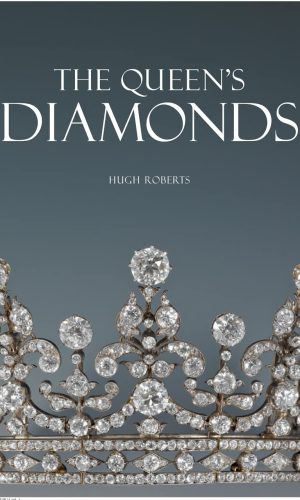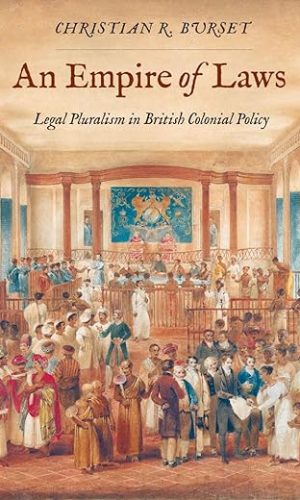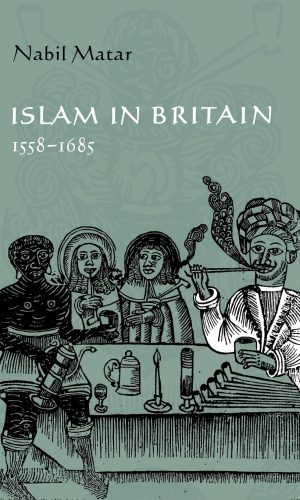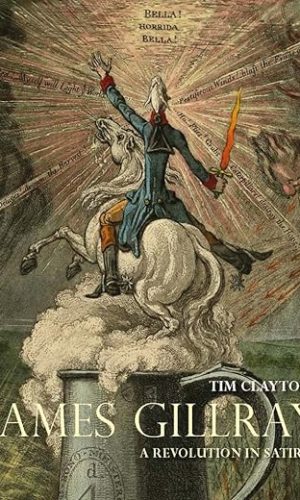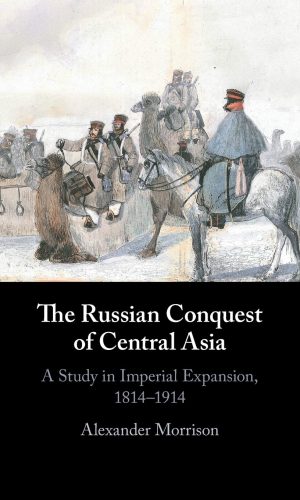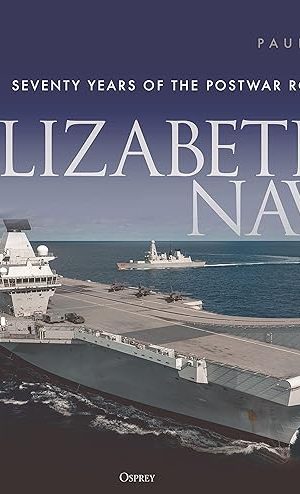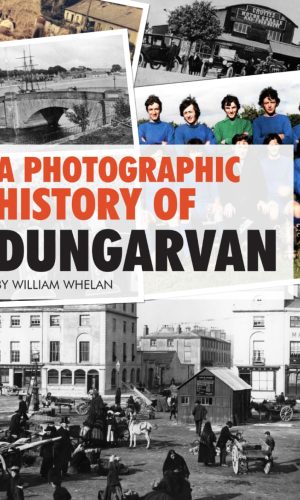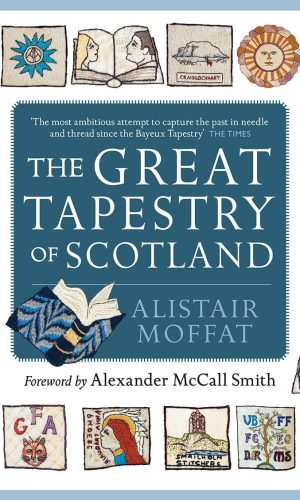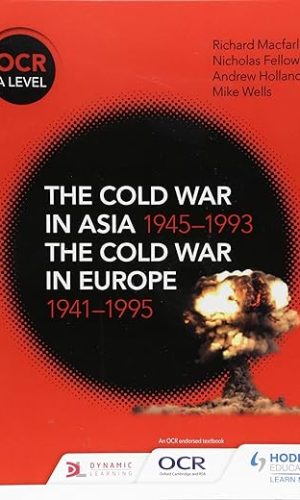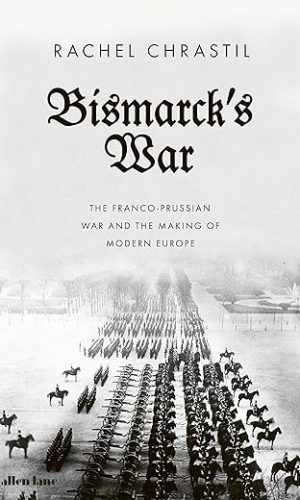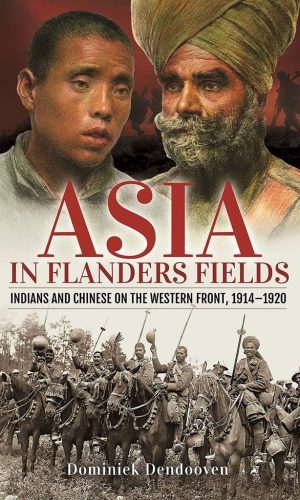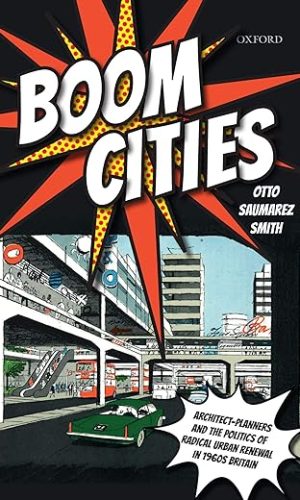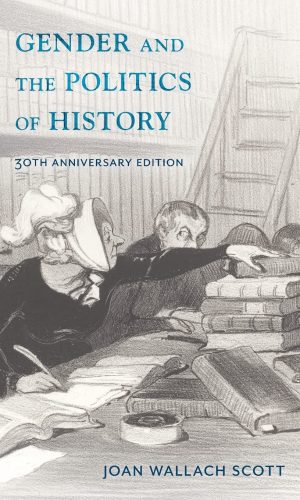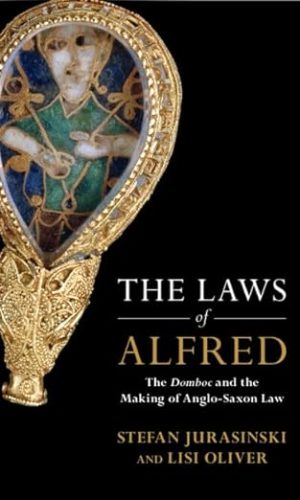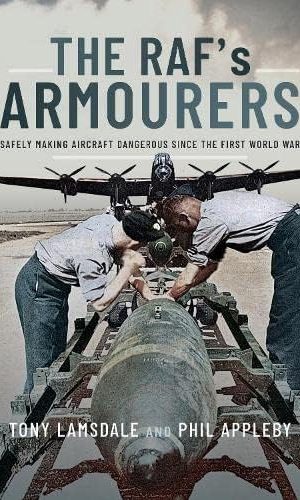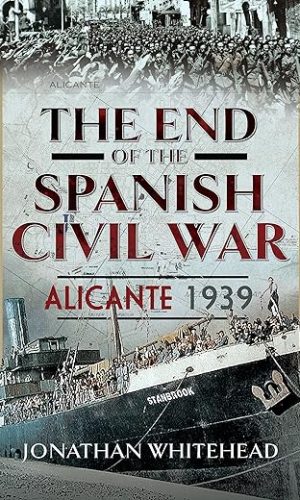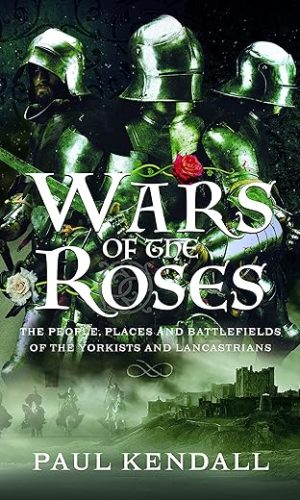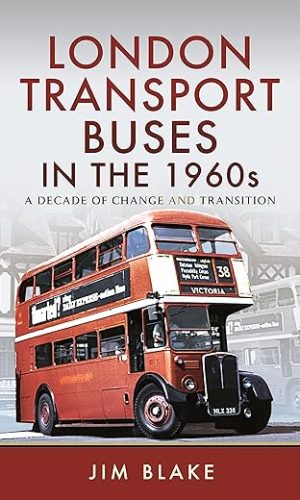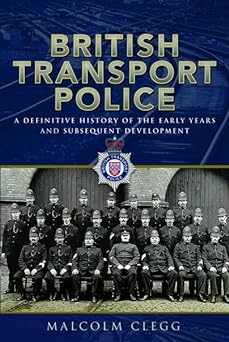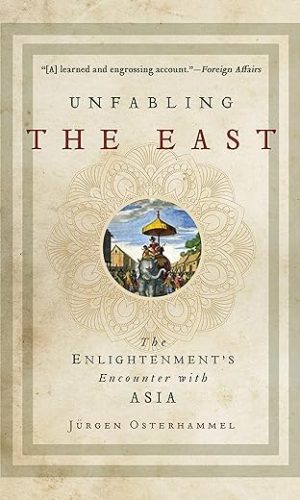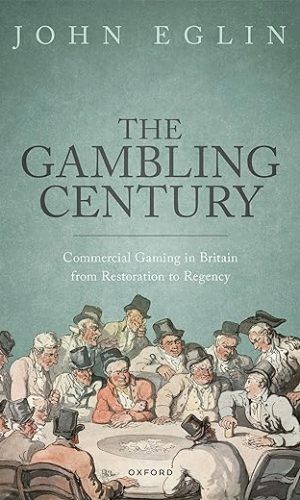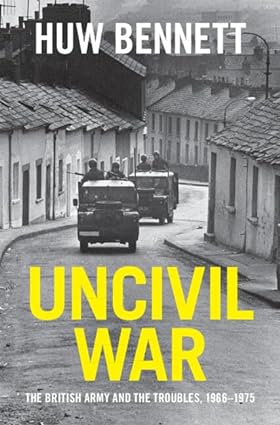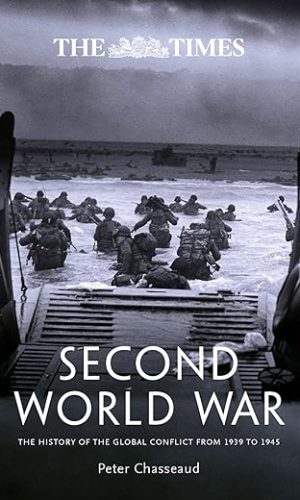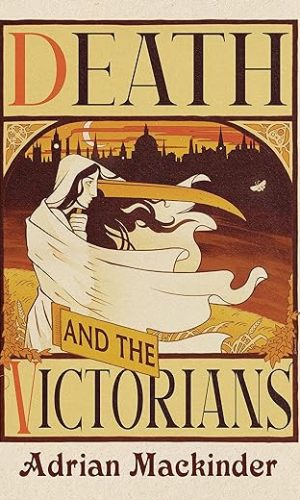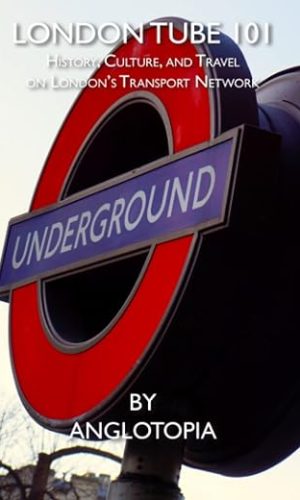Europe
-
The Queen’s Diamonds
This book is the first authorised account of the history of the finest diamond jewellery in the world. It tells the story of the magnificent royal inheritance of diamonds from the time of Queen Adelaide in the 1830s to the present day. Illustrated with a wide range of archive material as well as extensive new photography of the jewels, this fully researched publication includes stones of international importance as well as pieces of great historic significance, and will be a standard work of reference on diamond jewellery for many years to come.Read more
£83.80£118.80The Queen’s Diamonds
£83.80£118.80 -
Gambling in Britain in the Long Eighteenth Century
English society in the eighteenth century was allegedly marked by a ‘gambling mania’, such was the prevalence and intensity of different forms of ‘gaming’. Gambling in Britain in the Long Eighteenth Century subjects this notion to systematic scrutiny, exploring the growth and prevalence of different forms of gambling across Britain and throughout British society in this period, as well as attitudes towards it. Drawing on a vast range of new, empirical evidence, Bob Harris seeks to understand gambling, its growth, and significance within the context of wider trends and impulses in society. This book asks what light gambling practices and habits shed back onto society and the values, hopes, and expectations that informed the lives of those involved. This is a book, therefore, as much about the character of British society in the long eighteenth century as it is about gambling itself.Read more
£67.70 -
Transport and the Industrial City: Manchester and the Canal Age, 1750-1850
This book presents the first scholarly study of the contribution of canals to Britain’s industrial revolution. Although the achievements of canal engineers remain central to popular understandings of industrialisation, historians have been surprisingly reticent to analyse the full scope of the connections between canals, transport and the first industrial revolution. Focusing on Manchester, Britain’s major centre of both industrial and transport innovation, it shows that canals were at the heart of the self-styled Cottonopolis. Not only did canals move the key commodities of Manchester’s industrial revolution -coal, corn, and cotton – but canal banks also provided the key sites for the factories that made Manchester the ‘shock city’ of the early Victorian age. This book will become essential reading for historians and students interested in the industrial revolution, transport, and the unique history of Manchester, the world’s first industrial city.Read more
£57.80£66.50 -
The Royal Navy in the Cold War Years, 1966-1990: Retreat and Revival
The Royal Navy in the Cold War Years, 1966-1990: Retreat and Revival is the first book to cover this subject in depth for more than thirty years. With unique access to primary, archival sources, Edward Hampshire offers important and fascinating insights into the naval dimension of the Cold War.During the period covered by this new book the Royal Navy faced some of its greatest challenges, both at sea confronting the increasingly capable and impressive Soviet Navy, and on shore when it faced policy crises that threatened the survival of much of the fleet. During this remarkable period, the Navy had rarely been so focused on a single theater of war-the Eastern Atlantic-but also rarely so politically vulnerable.
The author sets out to analyze shadowing operations and confrontations at sea with Soviet ships and submarines; the Navy’s role in the enormous NATO and Warsaw Pact naval exercises that acted out potential war scenarios; individual operations from the Falklands and the 1990-91 Gulf War to the Beira and Armilla patrols; the development of advanced naval technologies to counter Soviet capabilities; policy-making controversies as the three services fought for resources-including the controversial 1981 Nott defense review; and what life was like in the Cold War navy for ratings and officers. The book, the first to cover this subject in depth for more than thirty years, will make use of the full range of archival sources that have been publicly available over the last two decades, but of which little use has been made by historians.
This work is destined to become a definitive naval history of the period. It also provides a fascinating and gripping narrative of a navy under threat from many directions but which survived and eventually prospered, winning a remarkable victory in the far South Atlantic more than seven thousand from its expected battleground in the North Atlantic. Written for a wide audience, this book will appeal to professional and enthusiast alike.
Read more
£53.00 -
An Empire of Laws: Legal Pluralism in British Colonial Policy (Yale Law Library Series in Legal History and Reference)
A compelling reexamination of how Britain used law to shape its empire
For many years, Britain tried to impose its own laws on the peoples it conquered, and English common law usually followed the Union Jack. But the common law became less common after Britain emerged from the Seven Years’ War (1754–63) as the world’s most powerful empire. At that point, imperial policymakers adopted a strategy of legal pluralism: some colonies remained under English law, while others, including parts of India and former French territories in North America, retained much of their previous legal regimes.
As legal historian Christian R. Burset argues, determining how much English law a colony received depended on what kind of colony Britain wanted to create. Policymakers thought English law could turn any territory into an anglicized, commercial colony; legal pluralism, in contrast, would ensure a colony’s economic and political subordination. Britain’s turn to legal pluralism thus reflected the victory of a new vision of empire―authoritarian, extractive, and tolerant―over more assimilationist and egalitarian alternatives. Among other implications, this helps explain American colonists’ reverence for the common law: it expressed and preserved their equal status in the empire. This book, the first empire-wide overview of law as an instrument of policy in the eighteenth-century British Empire, offers an imaginative rethinking of the relationship between tolerance and empire.Read more
£52.30 -
Imperial Persuaders: Images of Africa and Asia in British Advertising (Studies in Imperialism)
The first book to provide an historical survey of images of black people in advertising during the colonial period. Analyses the various conflicting, and changing ideologies of colonialism and racism in British advertising. Reveals the historical and production context of many well known advertising icons, as well as the specific commercial interests that various companies’ images projected. Provides a chronological understanding of changing colonial ideologies in relation to advertising, while each chapter explores images produced to sell specific products, such as soap, cocoa, tea and tobacco. — .Read more
£48.00 -
Introduction to English Legal History
Fully revised and updated, this classic text provides the authoritative introduction to the history of the English common law. The book traces the development of the principal features of English legal institutions and doctrines from Anglo-Saxon times to the present and, combined with Baker and Milsom’s Sources of Legal History, offers invaluable insights into the development of the common law of persons, obligations, and property, and also of criminal and public law. It is an essential reference point for all lawyers, historians and students seeking to understand the evolution of English law over a millennium.The book provides an introduction to the main characteristics, institutions, and doctrines of English law over the longer term – particularly the evolution of the common law before the extensive statutory changes and regulatory regimes of the last two centuries. It explores how legal change was brought about in the common law and how judges and lawyers managed to square evolution with respect for inherited wisdom.
Read more
£42.70 -
Islam in Britain, 1558-1685
This book examines the impact of Islam on Britain between 1558 and 1685. Professor Matar provides a perspective on the transformation of British thought and society by demonstrating how influential Islam was in the formation of early modern British culture. Christian-Muslim interaction was not, as is often thought, primarily adversarial; rather, there was extensive cultural, intellectual and missionary engagement with Islam in Britain. The author documents conversion both to and from Islam, and surveys reactions to these conversions. He examines the impact of the Qur’an and Sufism, not to mention coffee, on British culture, and cites extensive interaction of Britons with Islam through travel, in London coffee houses, in church, among converts to and from Islam, in sermons and in plays. Finally, he focuses on the theological portrait of Muslims in conversionist and eschatological writings.Read more
£36.10Islam in Britain, 1558-1685
£36.10 -
James Gillray: A Revolution in Satire
A lavishly illustrated biography of James Gillray, inventor of the art of political caricature
James Gillray (1756–1815) was late Georgian Britain’s funniest, most inventive, and most celebrated graphic satirist and continues to influence cartoonists today. His exceptional drawing, matched by his flair for clever dialogue and amusing titles, won him unprecedented fame; his sophisticated designs often parodied artists such as William Hogarth, Joshua Reynolds, and Henry Fuseli, while he borrowed and wittily redeployed celebrated passages from William Shakespeare and John Milton to send up politicians in an age―as now―where society was fast changing, anxieties abounded, truth was sometimes scarce, and public opinion mattered.
Tim Clayton’s definitive biography explores Gillray’s life and work through his friends, publishers―the most important being women―and collaborators, aiming to identify those involved in inventing satirical prints and the people who bought them. Clayton thoughtfully explores the tensions between artistic independence, financial necessity, and the conflicting demands of patrons and self-appointed censors in a time of political and social turmoil.
Distributed for the Paul Mellon Centre for Studies in British ArtRead more
£34.80£47.50James Gillray: A Revolution in Satire
£34.80£47.50 -
The Russian Conquest of Central Asia: A Study in Imperial Expansion, 1814–1914
The Russian conquest of Central Asia was perhaps the nineteenth century’s most dramatic and successful example of European imperial expansion, adding 1.5 million square miles and at least 6 million people – most of them Muslims – to the Tsar’s domains. Alexander Morrison provides the first comprehensive military and diplomatic history of the conquest to be published for over a hundred years. From the earliest conflicts on the steppe frontier in the 1830s to the annexation of the Pamirs in the early 1900s, he gives a detailed account of the logistics and operational history of Russian wars against Khoqand, Bukhara and Khiva, the capture of Tashkent and Samarkand, and the bloody subjection of the Turkmen, as well as Russian diplomatic relations with China, Persia and the British Empire. Based on archival research in Russia, Kazakhstan, Uzbekistan, Georgia and India, memoirs and Islamic chronicles, this book explains how Russia conquered a colonial empire in Central Asia, with consequences that still resonate today.Read more
£34.20 -
Elizabeth’s Navy: Seventy Years of the Postwar Royal Navy
With over 260 images, this is a highly illustrated history of the ships and operations of the Royal Navy during the reign of the late Queen Elizabeth II.
During the 70 years spanned by the reign of the late Queen Elizabeth II, the Royal Navy changed out of all recognition. Its status as a superpower navy with worldwide bases and operations has been eclipsed, but it remains a powerful force because of its potency if not its size. Maritime history author Paul Brown takes us through each decade in turn, outlining the key events and developments, and charting the changes to the size, structure and capabilities of the Navy.
Fully illustrated with over 260 colour and black and white images, this book also provides a stunning visual record of the ships and operations that featured most prominently in each decade.
Read more
£34.10£42.80 -
The Sea Kingdoms: The History of Celtic Britain and Ireland
A journey from Shetland to Cornwall reveals – gloriously – the nature and history of the Celts.
‘I have travelled south from Stornoway through all the Hebrides to Ulster, to Galloway, to the Isle of Man, southern and western Ireland. I can report that there is such a place as Celtic Britain, that it shares a common culture, an intimately related history and strikingly similar geography. The story of Celtic Britain can be found in these places.’
The Sea Kingdoms is a narrative history based on a journey from Shetland, down the west coast of Scotland taking in the Isle of Man and the Outer Hebrides, across to Ireland, back to Anglesey and the west Welsh coast, back to Ireland again and finally Cornwall. The heart of the book is the journey from which Moffat strays into the oral histories, legends and known events of the Celts and their past. Its narrative soaked in legend and myth and sensuality, tragedy and gore. In Moffat’s masterful hands,all these apparently disparate stories, fragments of history and myth come together to give the most powerful representation yet of the race who have repeatedly changed history as we know it.
Ranging between pre-history and the present, with much inbetween – The Sea Kingdoms tells the story of a people, stretched down 1,000 miles of coastline that has to be Britain’s richest and most ancient. It also tells the story of the sea itself, which has more than anything shaped the Celtic character.
Read more
£28.50 -
The Ritz London: The Cookbook
AS SEEN ON TV
As featured on ITV’s ‘Inside the Ritz’ series
‘When you look at the dishes in this book, the photographs – it’s beyond beautiful. You wouldn’t need to cook a thing. You could just flick through these pages – it is a proper feast for the eyes.’ - Graham Norton
‘As sumptuous as Williams’s exquisite cooking, this is a magnificent volume. And a fitting tribute to one of the world’s great restaurants. The recipes aren’t simple but this is one of those books to immerse yourself in. Five-star brilliance.’ – Tom Parker Bowles, Mail on Sunday
‘Less a classic cookbook than a contemporary guide to gracious living… Subdividing its contents into four seasons, each is introed with a classic cocktail, and there are contributions from The Ritz’s stellar staff. But really this is Williams’s show, a masterclass in munificence…’ – British GQ
‘A real tour de force … Definitely the stand-out recipe book of the year for me.’ – The Caterer
‘John Williams’s food at the Piccadilly institution is revered. Now it has brought out the cookbook so you can recreate the magic at home.’ – ES Magazine
‘Part technical recipe book, part memoir. There are Williams’s memories of growing up in South Shields, the son of a trawlerman, who accompanied his mother on shopping trips to the butcher and developed a precocious taste for tripe and Jersey Royals. As for the recipes, certain classics are within the range of the dinner-party cook (salt-baked celeriac, for instance, or venison Wellington).’ – Telegraph
‘A work of art, full of recipes exactly as they are made in the Ritz kitchen, beautifully photographed by John Carey. Marvel at the sheer amount of work and skill that goes into each dish, the processes and the perfectionism – and maybe start with the recipe for scones on page 112.’ – hot-dinners.com
‘… As an exemplar of classic and timeless dishes, it is an invaluable book that lets the reader peer behind the screen of one of the capital’s most enduring institutions. For Williams’ anecdote on the eating habits of the late Margaret Thatcher, it is worth the cover price alone.’ – Big Hospitality
‘Distinctive cookbook… This upscale offering is wholly in keeping with its subject: elegant, carefully studied, and more aspirational than practical.’ – Publishers Weekly
The Ritz: The Quintessential Cookbook is the first book to celebrate recipes of the dishes served today, at lunch and at dinner. The book features 100 delicious recipes, such as Roast scallops bergamot & avocado, Saddle of lamb belle époque and Grand Marnier Soufflé, and is divided into the four seasons: spring, summer, autumn and winter.
The recipes reflect the glorious opulence and celebratory ambience of The Ritz; seasonal dishes of fish, shellfish, meat, poultry and game. Desserts include pastries, mousses, ice creams and spectacular, perfectly-risen soufflés. There are recipes that are simple and others for the more ambitious cook, plus helpful tips to guide you at home.
Along the way, John Williams shares his culinary philosophy and expertise. For any cook who has wondered how they do it at The Ritz, this book will provide the answers. There will be plenty of entertaining tales about the hotel and unique glimpses of London’s finest kitchen beneath ground.
Read more
£28.50£38.00The Ritz London: The Cookbook
£28.50£38.00 -
A Photographic History of Dungarvan (The Waterford History Series)
“A pleasure to read, with more laughs than most history books”.This book is a photographic history of Dungarvan and the people who live in the town. A Dungarvan book, for Dungarvan people. The content originally appeared as the “Waterford County Museum Remembers” column in the Dungarvan Leader newspaper. These articles are now gathered together in one volume of almost 400 pages featuring over five hundred photos black and white photos from the museum archive. Factories, shops, politicians, streets, sports, trades, and music are just a few of the topics explored in the book. The introductions and captions are sometimes whimsical, often nostalgic but are packed with historical information gleaned from the author’s thirty-year involvement in local history.
Read more
£27.40 -
Old English Legal Writings: 66 (Dumbarton Oaks Medieval Library)
Archbishop Wulfstan of York (d. 1023) was a powerful clergyman and the most influential political thinker of pre-Conquest England. An advocate for the rights and privileges of the Church, he authored the laws of King Aethelred and King Cnut in prose that combined the rhetorical flourishes of a master homilist with the language of law. Some works forged a distinctive style by adding rhythm and alliteration drawn from Old English poetry. In the midst of Viking invasions and cultural upheaval, Wulfstan articulated a complementary relationship between secular and ecclesiastical law that shaped the political world of eleventh-century England. He also pushed the clergy to return to the ideals of their profession. Old English Legal Writings is the first publication to bring together Wulfstan’s works on law, church governance, and political reform. When read together, they reveal the scope and originality of his thought as it lays out the mutual obligations of the church, the state, and the common people. This volume presents new editions of the Old English texts alongside new English translations.Read more
£26.90 -
Soldiers and Civilians, Transport and Provisions: Early Modern Military Logistics and Supply Systems During the British Civil Wars, 1638-1653: 108 (Century of the Soldier)
Until now historical works have neglected to fully consider the events of the British Civil Wars with respect to the logistics and supply systems. As such, this book evaluates and challenges these narratives of the wars by tackling historical debates through the lens of these logistics and supply systems at an operational level. How the military logistics and supply systems of the period functioned is revealed, including what methods of supply were used, what decisions and events these systems impacted, and how these related to strategic and tactical outcomes of the wars.The book investigates the facets of land, coastal, and riverine transportation, the supply of manpower to the armies, and the supply of food, clothing, and shelter to multiple forces across various conflicts throughout the British Civil Wars. With an application of a broad range of both civilian and military sources, this research employs archival and manuscript materials from national and local archives across the British Isles, contemporary tracts, letters, books, and pamphlets, as well as secondary literature from a variety of historical fields–from military history, economic and social studies, as well as reconstructive archaeology. As a result, the study outlines regional disparity in military logistics systems due to reliance on pre-existing civilian structures and methods–which had not been developed with a military purpose in mind and resulted in substantial logistical and supply differences that consequently, and heavily, favored one faction over another.
Many questions that have bedevilled previous historiography–and some that remain contentious even today–are likewise explored through this new perspective. This includes, but is not limited to, countering the simple narrative that Royalist armies were terribly supplied in comparison to Parliament, placing the Royalists’ Gloucester campaign in its correct strategic context, highlighting Catholic recruitment to Cromwell’s forces in Ireland, and providing a reasonable and informed explanation for Prince Rupert’s decision to fight at Marston Moor–all through the lens of logistics and supply. It emphasizes the absolute necessity of interactions between civil and military authority across multiple levels to supply early modern forces, providing a more nuanced history of civilian and military interactions than the popular view of soldiers imposing their will on a suffering population.
The book’s analysis of logistics and supply during the British Civil Wars, a focus not undertaken in such detail so far for the period, will provide a compelling read for those with interests in the operational realities of warfare during the seventeenth century more broadly, and the British Civil Wars in particular.
Read more
£25.80£33.30 -
The Great Tapestry of Scotland
The Great Tapestry of Scotland is an outstanding celebration of thousands of years of Scottish history and achievement, from the end of the last Ice Age to Dolly the Sheep and Andy Murry’s Wimbledon victory of 2013. More than 1000 stitchers spent a total of 55,000 sewing hours on the 160 panels that make up this extraordinary work of art.
This book shows in full colour all the finished panels of the tapestry – one of the biggest community arts projects ever to take place in Scotland – together with descriptive and explanatory material on each panel and lists of all the stitchers involved.
Read more
£25.50£28.50The Great Tapestry of Scotland
£25.50£28.50 -
OCR A Level History: The Cold War in Asia 1945–1993 and the Cold War in Europe 1941–95
Exam board: OCR
Level: A Level
Subject: History
First teaching: September 2015
First exams: AS: Summer 2016, A Level: Summer 2017An OCR endorsed resource
Successfully cover Unit Group 2 with the right amount of depth and pace. This bespoke series from the leading History publisher follows our proven and popular approach for OCR A Level, blending clear course coverage with focused activities and comprehensive assessment support.
– Develops understanding of the period through an accessible narrative that is tailored to the specification content and structured around key questions for each topic
– Builds the skills required for Unit Group 2, from explanation, assessment and analysis to the ability to make substantiated judgements
– Enables students to consolidate and extend their topic knowledge with a range of activities suitable for classwork or homework
– Helps students achieve their best by providing step-by-step assessment guidance and practice questions
– Facilitates revision with useful summaries at the start and end of each chapter
– Ensures that students understand key historical terms and concepts by defining them in the glossary
Read more
£24.70 -
Bismarck’s War: The Franco-Prussian War and the Making of Modern Europe
‘Compassionate and thought-provoking history’ Daily Telegraph
‘Superb on the human consequences of war, ravishing in its evocations of wartime life’ The Times
‘Fresh and compelling … a tour-de-force’ David A. Bell
Less than a month after it marched into France in summer 1870, the Prussian army had devastated its opponents, captured Napoleon III and wrecked all assumptions about Europe’s pecking order. Other countries looked on in helpless amazement. Pushing aside further French resistance, a new German Empire was proclaimed (as a deliberate humiliation) in the Palace of Versailles, leaving the French to face civil war in Paris, reparations and the loss of Alsace and Lorraine.
Bismarck’s War tells the story of one of the most shocking reversals of fortune in modern European history. The culmination of a globally violent decade, the Franco-Prussian War was deliberately engineered by Bismarck, both to destroy French power and to unite Germany. It could not have worked better, but it also had lurking inside it the poisonous seeds of all the disasters that would ravage the twentieth century.
Drawing on a remarkable variety of sources, Chrastil’s book explores the military, technological, political and social events of the war, its human cost and the way that the sheer ferocity of war, however successful, has profound consequences for both victors and victims.
Read more
£24.50£28.50 -
In Little Need of Divine Intervention: Takezaki Suenaga’s Scrolls of the Mongol Invasions of Japan: 113 (Cornell East Asia)
In Little Need of Divine Intervention presents a fundamental revision of the thirteenth-century Mongol Invasions of Japan by revealing that the warriors of medieval Japan were capable of fighting the Mongols to a standstill without the aid of any “divine winds” or kamikaze. Conlan’s interpretation of the invasions is supplemented with translations of the picture scrolls commissioned by Takezaki Suenaga, a warrior who fought against the Mongols. In addition, translations of nearly seventy administrative documents are provided, thereby enabling students of Japanese history reconstruct the invasions using contemporary sources. A rare copy of Takezaki Suenaga’s Scrolls, reproduced in full, reveals hitherto unknown missing scenes. Furthermore, the scrolls’ images can be now read in tandem with its narrative passages, translated in English for the first time. Please note that the entire book was intentionally printed from back to front, so that the reproduced scrolls unfold in Japanese order, from right to left. Thus the book’s spine is on the right. This monograph will prove to be of great interest for students and scholars of medieval Japanese history, warrior culture, and the nature of Japan in an East Asian context.
Read more
£23.70 -
Asia in Flanders Fields: Indians and Chinese on the Western Front, 1914 1920
The First World War brought peoples from five continents to support the British and French Allies on the Western Front. Many were from colonial territories in the British and French empires, and the largest contingents were Indians and Chinese – some 140,000. It is a story of the encounter with the European ‘other’, including the civilian European local populations, often marred by racism, discrimination and zenophobia both inside and outside the military command, but also lightened by moving and enduring ‘human’ social relationships. The vital contribution to the Alles and the huge sacrifices involved were scarcely recognised at the Paris Peace Conference in 1918 or the post-war victory celebrations and this led to resentment – see huge media coverage in 2021. The effect of the European ‘other’ experience enhanced Asian political awareness and self-confidence, and stimulated anti-imperialism and proto-nationalism. This is a vivid and original contribution to imperial decline from the First World War. and the originality of the work is enhanced by rare sources culled from original documents and ‘local’ European fieldwork – in French, German and Flemish.Read more
£23.70 -
Boom Cities: Architect Planners and the Politics of Radical Urban Renewal in 1960s Britain
Boom Cities is the first published history of the profound transformations of British city centres in the 1960s.It has often been said that urban planners did more damage to Britain’s cities than even the Luftwaffe had managed, and this study details the rise and fall of modernist urban planning, revealing its origins and the dissolution of the cross-party consensus, before the ideological smearing that has ever since characterized the high-rise towers, dizzying ring roads, and concrete precincts that were left behind.
The rebuilding of British city centres during the 1960s drastically affected the built form of urban Britain, including places ranging from traditional cathedral cities through to the decaying towns of the industrial revolution. Boom Cities uncovers both the planning philosophy, and the political, cultural, and legislative background that created the conditions for these processes to occur across the country.
Boom Cities reveals the role of architect-planners in these transformations. The volume also provides an unconventional account of the end of modernist approaches to the built environment, showing it from the perspective of planning and policy elites, rather than through the emergence of public opposition to planning.
Read more
£22.60 -
Gender and the Politics of History (Gender and Culture Series)
This landmark work from a renowned feminist historian is a foundational demonstration of the uses of gender as a conceptual tool for cultural and historical analysis. Joan Wallach Scott offers a trenchant critique of the compartmentalization of women’s history, arguing that political and social categories are always fundamentally shaped by gender and that questions of gender are essential to considerations of difference in history. Exploring topics ranging from language and class to the politics of work and family, Gender and the Politics of History is a vital contribution to feminist history and historical methodology that also speaks more broadly to the ongoing redefinition of gender in our political and cultural vocabularies.This anniversary edition of a classic text in feminist theory and history shows the evergreen relevance of Scott’s work to the humanities and social sciences. In a new preface, Scott reflects on the book’s legacy and implications for contemporary politics as well as what she has reconsidered as a result of her engagement with psychoanalytic theory. The book also includes a previously unpublished essay, “The Conundrum of Equality,” which takes up the question of affirmative action.
Read more
£22.40£23.80 -
The Laws of Alfred: The Domboc and the Making of Anglo-Saxon Law (Studies in Legal History)
Alfred the Great’s domboc (‘book of laws’) is the longest and most ambitious legal text of the Anglo-Saxon period. Alfred places his own laws, dealing with everything from sanctuary to feuding to the theft of bees, between a lengthy translation of legal passages from the Bible and the legislation of the West-Saxon King Ine (r. 688–726), which rival his own in length and scope. This book is the first critical edition of the domboc published in over a century, as well as a new translation. Five introductory chapters offer fresh insights into the laws of Alfred and Ine, considering their backgrounds, their relationship to early medieval legal culture, their manuscript evidence and their reception in later centuries. Rather than a haphazard accumulation of ordinances, the domboc is shown to issue from deep reflection on the nature of law itself, whose effects would permanently alter the development of early English legislation.Read more
£21.80 -
Atlas de Paris au Moyen-Age 2018: Espace urbain, habitat, société, religion et lieux de pouvoir
Paris ― 200 000 habitants en 1300 ― est la plus grande ville de l’Occident médiéval. Elle devient au xIIIe siècle la capitale du puissant royaume de France vers laquelle affluent intellectuels, hommes d’affaires et artistes. La croissance sans précédent de la cité n’a pas manqué de laisser une empreinte durable. Dans bien des quartiers, le tracé actuel des rues reflète les opérations de lotissement qui présidèrent à l’installation des nouveaux venus au cours du Moyen Age. Si peu d’édifices médiévaux sont aujourd’hui visibles dans leur quasi-intégrité, telles Notre-Dame ou la Sainte-Chapelle, beaucoup sont conservés de manière fragmentaire, comme le Louvre de Philippe Auguste, la salle des gens d’armes de la Conciergerie ou le réfectoire du couvent des Cordeliers. Ces vestiges ― et bien d’autres ― jalonnent la trame urbaine dont les aspects changeant au fil d’un millénaire sont restitués par les images anciennes. Entre la “ville idéale” rêvée par les rois et la cité grouillante aux maisons serrées les unes contre les autres, aux ruelles étroites et nauséabondes, se dessine le visage du Paris médiéval.Read more
£21.20 -
The RAF’s Armourers: Safely Making Aircraft Dangerous Since the First World War
It is said that one of the earliest trades in the world is that of the Armourer. Historically, it is a profession dated slightly after prostitution, but well before banking! Since the birth of the Royal Flying Corps in 1912 through to the modern Royal Air Force, the role of the Armourer has been pivotal. Not for nothing did the founder of the RAF, Lord Trenchard, once declare: The Armourer – without him there is no need for an air force.’ In the years since the need for RAF Armourers was first recognised, it has been a role that has evolved with the times. What has remained constant, however, is the fact that it is still a fascinating and potentially dangerous trade with many different branches and specialisms. In this book the authors, one of whom, Tony Lamsdale, is himself a former RAF Armourer, reveal the previously untold story of how the trade has adapted to the most modern of military machines, the aircraft. The authors look at the shared history of the Armourer and the RAF through the eyes of those who served. These veterans’ stories span decades, and their first-hand accounts and insights into conflict and peace-time operations demonstrate the qualities and characteristics that make Armourers unique. The book starts with a brief history of the Armourer, then before capturing the adventures and exploits of RAF Armourers from the Second World War and on into the Cold War. The dangerous duties of the Armourers on deployment in such places as the Falklands, Iran, Iraq or Afghanistan are all explored. There is also the question of having to learn of bomb dumps, the use of small arms and the unique world of the Armourer with its own peculiar language and the camaraderie of the crew room. With each chapter brought to life through personal anecdotes and shared experiences, this book provides an insight into an utterly essential role which has remained largely hidden – until now.Read more
£20.30£26.60 -
The End of the Spanish Civil War: Alicante 1939
The Spanish Civil War ended in Alicante. After Catalonia fell to the Hitler and Mussolini backed military rebellion of Franco’s Nationalists at the outset of 1939, the legitimate Republican government of Dr Negrín was faced with a choice between apparently futile resistance or unconditional surrender to the triumphant Nationalists. Choosing the path of continued defiance until they could force concessions or at least implement a mass evacuation of those Republicans most at risk in Franco’s new Spain, the government withdrew to Elda in the province of Alicante. However, their plans were thwarted by a new rebellion of Republican officers, led by Colonel Segismundo Casado, who resented Negrín’s reliance on the Communist Party and the USSR and believed themselves better equipped to negotiate a peace settlement with Franco. They were misguided, Franco had no wish, and ultimately no need to negotiate. Meanwhile, faced with the imminent risk of arrest by the new junta, the Prime Minister and his cabinet were forced to abandon Spain from the tiny aerodrome of Monóvar. A relatively quiet port on the eastern, Mediterranean coast of Spain, Alicante had remained at some distance from the frontlines throughout the fighting on the ground, but swiftly became a target for Italian bombers operating out of bases in the Balearic Islands. In May 1938, at the height of the air offensive, Italian bombers attacked the marketplace, causing a massacre as tragic as the events in Guernica, yet largely ignored by historians. As the war drew towards its conclusion, Alicante became increasingly significant as attention focused on the plight of the defeated Republicans. In the second half of March 1939, the fronts collapsed, and Madrid finally fell to the insurgents. Tens of thousands of refugees descended on Alicante in the forlorn hope of rescue by French and British ships that had been promised but which failed to materialise. Amid the tragedy, as the British and French governments declined to engage in any humanitarian intervention that might offend Hitler and Mussolini, a single hero emerged; Captain Archibald Dickson, the Welsh master of the Stanbrook who ditched his cargo and transported 3,000 refugees to safety in North Africa. On 30 March 1939, Franco’s vanguard, the Italian ‘Volunteer’ Corps under General Gastone Gambara, occupied a town already under the control of the Fifth Column. Two days later the Generalísimo issued a communiqué from his headquarters in Burgos, declaring that the war was over. The bulk of the Republicans surrounded and captured in the port were marched to an improvised internment camp, known as the Campo de los Almendros (Field of Almond Trees). They were then transferred to the infamous concentration camp at Albatera to share the fate of defeated Republicans across Spain and to undergo the programme of ideological cleansing of the new fascist authorities.Read more
£20.00£23.80The End of the Spanish Civil War: Alicante 1939
£20.00£23.80 -
Wars of the Roses: The People, Places and Battlefields of the Yorkists and Lancastrians
The Wars of the Roses, which saw England and Wales ravaged by warfare for three decades and dynasties rise and fall, decimated the nobility of an entire generation, and saw the rise of the merchant class, the decline of medieval feudalism and opened the country to the enlightened ideals of the Renaissance. Such has been its lasting effects the red and white rose of the Tudors is still a national symbol. This book is an exploration of the buildings, monuments, towns and battlefields of that turbulent era across both England and Wales – places that can still be visited and experienced today. The stories of the great battles of St Albans, Stoke Field, Wakefield, Townton, Barnet, Tewksbury and, of course, Bosworth, are told along with beautiful photographs to help guide the reader round these important sites, as well as the dozens of smaller engagements where the supporters of the Houses of York and Lancaster fought and died. Here are castles and manor houses galore, all of which played their part in this protracted struggle for the throne of England, such as Richard of York’s imposing powerbase of Lulow Castle and the magnificent Tudor stronghold of Bamburg. These are compared with the scant remains of Fotheringhay Castle, the birthplace of Richard III – the man whose remains were so dramatically uncovered in Leicester – and Micklegate Bar, York, was where Richard’s head was placed on a spike. We see the Clocktower of St Albans and ‘Gabriel’ the bell that was rung in 1455 alerting of the Yorkist advance, as well as the Tower of London where Henry VI met his death and the possible burial place of the two princes. These, and scores of other places, monuments, plaques, buildings and battlegrounds, represent not only a journey across England and Wales, but a journey back in time to the bloody conflict that was the War of the Roses.Read more
£20.00£23.80 -
Helicopters and North Sea Oil: A Story of Service, Danger and Survival
A series of personal accounts by highly trained helicopter pilots, including those with distinguished careers in the military and commercial flying, who with divers, ensured that essential staff could operate in North Sea oil exploration and oil supply. They were the vital link in the process and operated in the most challenging circumstances, often in high levels of danger and sometimes with loss of life, for example, the Piper Alpha Disaster which made national news. And the ferrying of essential personnel and supplies could involve rescues as well routine flying missions. The narrative is often technical but written to ensure good understanding for lay readers and it will, of course, appeal to the many with flying experience in the forces, in commercial flying and government service. Above all, it is a series of graphic personal stories as recounted by individuals faced with extremes of climate, weather, technical, engineering and aeronautical problems and often with human life at stake. The people come to life and with domestic and social concerns and interests are ‘real’ and believable people. It is history of the North Sea oil episode in UK political and economic history and in conjunction with international oil politics is of huge importance to Britain’s economy. This is a period of progress to domestic oil independence by about 1984 and so a key period with subsequent importance even to the present. All aspects of the operations are covered within individual stories, and include the broader questions of company policy, regulation, and trade union involvement.Read more
£20.00£23.80 -
The London Underground, 1968-1985: The Greater London Council Years
LONDON’S HISTORIC, iconic Underground railway system in the period from 1968 to 1985 was a very different place to what it is in the 2020s. Much of its rolling stock dated from before World War Two, and with the exception of the new Victoria Line and the isolated Woodford to Hainault shuttle, trains were all two-person operated as the 1970s dawned. Transport photographer Jim Blake recorded most of the system on film before it would change forever, concentrating on the older rolling stock as well as other items of interest due for replacement or modernisation, during this period when, regrettably, London Transport was often starved of much-needed funds by central government. The eminently sensible transfer of overall control of London’s buses and Underground system to the city-wide Greater London Council at the beginning of 1970 was snatched away by the Thatcher regime in 1984, after which things rapidly went downhill. This book covers the years of GLC control, including the months prior to their taking charge in order to set the scene. Many rare and unusual scenes are included in this volume, especially of the then still basically intact portion of the uncompleted Northern Line extension between Drayton Park and Highgate, which had been so close to completion when work was halted during the war, but then abandoned in the early 1950s, incurring much wasted work and expenditure. For anyone with a serious interest in London’s Underground, this book is essential reading, including as it does many pervious unpublished photographs.Read more
£20.00£23.80 -
London Transport Buses in the 1960s: A Decade of Change and Transition
Just as life in Britain generally changed dramatically during the 1960s, so did London Transport’s buses and their operations. Most striking was the abandonment of London’s trolleybuses, once the world’s biggest system, and their replacement by motorbuses. Begun in 1959 using surplus RT-types, it was completed by May 1962 using new Routemasters, designed specifically to replace them. They then continued to replace RT types, too. Traffic congestion and staff shortages played havoc with London Transport’s buses and Green Line coaches during the 1960s, one-man operation was seen as a remedy for the latter, shortening routes in the Central Area for the former. Thus the ill-fated “Reshaping Plan” was born, introducing new O.M.O. bus types. These entered trial service in 1965, and after much delay the plan was implemented from September 1968 onwards. Sadly, new MB-types, also introduced in the Country Area, soon proved a disaster! Unfortunately, owing to a government diktat, Routemaster production ended at the start of 1968, forcing LT to buy “off-the-peg” vehicles unsuited to London operation and their in-house overhaul procedures. The decade ended with the loss of LT’s Country Area buses and Green Line coaches to the National Bus Company. Photographer Jim Blake began photographing London’s buses towards the end of the trolleybus conversion programme in 1961 and continued dealing with the changing scene throughout the decade. He dealt very thoroughly with the “Reshaping” changes, and many of the photographs featured herein show rare and unusual scenes which have never been published before.Read more
£20.00£23.80 -
British Transport Police: A definitive history of the early years and subsequent development
This book traces the history of the British Transport Police, the National Police Force responsible for policing the railways of England, Scotland and Wales. The roots of the Force go back almost 200 years, starting with the development of the railways during the Nineteenth Century. Hundreds of railway companies were founded and although mergers and amalgamations took place, by the end of the century, well over 100 railway companies were operating, most of which employed railway policemen. The first railway policemen were recruited to work on the Stockton and Darlington Railway in 1826. Other railway companies quickly followed and by the 1850s, railway policemen with their smart uniforms and top hats were a common sight on Britain’s railways. During the Twentieth Century, railway companies continued to merge before being nationalised in 1948. The following year, the British Transport Commission (BTC) was created to oversee not only the newly nationalised railway network, but also the nation’s docks, shipping, inland waterways, road transport, road haulage and other companies. Also in 1949, the British Transport Commission Police (BTC Police) was created to take over the policing of these newly nationalised institutions. All the former railway, dock and canal police forces were then absorbed into the new BTC Police Force. The BTC was abolished in 1962, having incurred serious financial losses. The BTC Police was renamed the British Transport Police in 1963 and has continued to operate ever since. It no longer polices the docks, harbours and canals for reasons outlined in this book.Read more
£20.00£23.80 -
Edexcel A Level History, Paper 3: Britain: losing and gaining an empire, 1763-1914 Student Book + ActiveBook (Edexcel GCE History 2015)
This book:
- covers the essential content in the new specifications in a rigorous and engaging way, using detailed narrative, sources, timelines, key words, helpful activities and extension material
- helps develop conceptual understanding of areas such as evidence, interpretations, causation and change, through targeted activities
- provides assessment support for A level with sample answers, sources, practice questions and guidance to help you tackle the new-style exam questions.
It also comes with three years’ access to ActiveBook, an online, digital version of your textbook to help you personalise your learning as you go through the course – perfect for revision.
Read more
£19.90£21.60 -
Unfabling the East: The Enlightenment’s Encounter with Asia
How Enlightenment Europe rediscovered its identity by measuring itself against the great civilizations of Asia
During the long eighteenth century, Europe’s travelers, scholars, and intellectuals looked to Asia in a spirit of puzzlement, irony, and openness. In this panoramic book, Jürgen Osterhammel tells the story of the European Enlightenment’s nuanced encounter with the great civilizations of the East, from the Ottoman Empire and India to China and Japan. He shows how major figures such as Leibniz, Voltaire, and Gibbon took a keen interest in Asian culture and challenges the notion that Europe’s formative engagement with the non-European world was invariably marred by an imperial gaze and presumptions of Western superiority. A momentous work by one of Europe’s most eminent historians, Unfabling the East brings the sights and sounds of this tumultuous age vividly to life. It takes readers on a thrilling voyage to the farthest shores, bringing back vital insights for our own multicultural age.
Read more
£19.80£20.90 -
The Gambling Century: Commercial Gaming in Britain from Restoration to Regency
Gambling captures as nothing else the drama of the “long eighteenth century” between the age of religious wars and the age of revolutions. The society that was confronted with games of chance pursued as commercial ventures also came to grips with unprecedented social mobility, floated by new wealth from new sources that created fortunes from trade in sugar, cotton, ivory, silk, tea, or enslaved human beings. Likewise, play for money was prominent in the
public imagination as money itself, deployed through an ever expanding and ever more sophisticated range of mechanisms, increasingly invaded public awareness, as when prospective spouses in period fiction were rated in terms of annual income as if they were municipal bonds. Similarly, the archetypal figure of the
gambler captured the imagination of the public in fiction, media, and politics. At the same time, new interest in science, technology, engineering, and mathematics – encouraged and bankrolled by those in power – fostered a new and unprecedented appreciation for mathematical probability and its applications, opening the possibility that games of chance might be pursued as a profitable commercial venture.The Gambling Century focuses like no previous work on those who enabled, facilitated, and profited from gambling, as well as on efforts to regulate or outlaw it. Using extensive archival material as well as printed sources, it follows its subjects from the Court to the coffeehouse, to private clubs and “at homes” in townhouses, all of which prefigure that quintessentially modern gambling space, the casino.
Read more
£19.80 -
Uncivil War: The British Army and the Troubles, 1966–1975 (Cambridge Military Histories)
When Operation Banner was launched in 1969 civil war threatened to break out in Northern Ireland and spread over the Irish Sea. Uncivil War reveals the full story of how the British army acted to save Great Britain from disaster during the most violent phase of the Troubles but, in so doing, condemned the people of Northern Ireland to protracted, grinding conflict. Huw Bennett shows how the army’s ambivalent response to loyalist violence undermined the prospects for peace and heightened Catholic distrust in the state. British strategy consistently underestimated community defence as a reason for people joining or supporting the IRA whilst senior commanders allowed the army to turn in on itself, hardening soldiers to the suffering of ordinary people. By 1975 military strategists considered the conflict unresolvable: the army could not convince Catholics or Protestants that it was there to protect them and settled instead for an unending war.Read more
£19.00£23.80 -
A Nasty Little War: The West’s Fight to Reverse the Russian Revolution
‘A vivid and sparkling account, full of colour and dark drama’ The Observer
‘Chillingly original’ Max Hastings, ‘Pick of the Week’, The Times
‘Brilliantly depicts a disastrous failure’ Antony Beevor
‘Witty and elegant . . . Excellent background to today’s events’ Anne Applebaum
‘Britain’s most forgotten war, brilliantly remembered’ Simon Jenkins
‘Vivid and remarkably timely’ Martin Sixsmith
From the bestselling author of Borderland: A Journey Through the History of Ukraine
The extraordinary story of how the West tried to reverse the Russian Revolution.
In the closing months of the First World War, Britain, America, France and Japan sent arms and 180,000 soldiers to Russia, with the aim of tipping the balance in her post-revolutionary Civil War. From Central Asia to the Arctic and from Poland to the Pacific, they joined anti-Bolshevik forces in trying to overthrow the new men in the Kremlin, in an astonishingly ambitious military adventure known as the Intervention.
Fresh, in the case of the British, from the trenches, they found themselves in a mobile, multi-sided conflict as different as possible from the grim stasis of the Western Front. Criss-crossing the shattered Russian empire in trains, sleds and paddlesteamers, they bivouacked in snowbound cabins and Kirghiz yurts, torpedoed Red battleships from speedboats, improvised new currencies and the world’s first air-dropped chemical weapons, got caught up in mass retreats and a typhus epidemic, organised several coups and at least one assassination. Taking tea with warlords and princesses, they also turned a blind eye to their Russian allies’ numerous atrocities.
Two years later they left again, filing glumly back onto their troopships as port after port fell to the Red Army. Later, American veterans compared the humiliation to Vietnam, and the politicians and generals responsible preferred to trivialise or forget. Drawing on previously unused diaries, letters and memoirs, A Nasty Little War brings an episode with echoes down the century since vividly to life.
Read more
£19.00£23.80 -
The Times Second World War: The history of the global conflict from 1939 to 1945
The perfect gift for history fans.
Follow the conflict of World War 2 from 1939 to 1945 through a unique collection of historical maps, expert commentary and photographs. Published in association and including material from the archives of the Imperial War Museum, London.
Over 200 photographs and maps from the archives of The Imperial War Museum tell the story of how this global war was fought.
Descriptions of key historical events accompany the illustrations, giving a fascinating history of the war from an expert historian.
Key topics covered include
• 1939: Invasion of Poland
• 1940: German invasion of Low Countries & France
• 1940: Battle of Britain & German invasion threat
• Dec 1941: Pearl Harbor
• 1942: Turning points: Midway, Alamein, Stalingrad
• 1941-45: Barbarossa and the Eastern Front
• The War at Sea
• The advances to Jerusalem, Damascus and Baghdad
• The War in the Air
• 1944: Neptune & Overlord; D-Day & liberation of FranceRead more
£19.00£23.80 -
Death and the Victorians: A Dark Fascination
From spooky stories and real-life ghost hunting, to shows about murder and serial killers, we are fascinated by death – and we owe these modern obsessions to the Victorian age. Death and the Victorians explores a period in history when the search for the truth about what lies beyond our mortal realm was matched only by the imagination and invention used to find it. Walk among London’s festering graveyards, where the dead were literally rising from the grave. Visit the Paris Morgue, where thousands flocked to view the spectacle of death every single day. Lift the veil on how spirits were invited into the home, secret societies taught ways to survive death, and the latest science and technology was applied to provide proof of the afterlife. Find out why the Victorian era is considered the golden age of the ghost story, exemplified by tales from the likes of Charles Dickens, Elizabeth Gaskell, Oscar Wilde and Henry James. Discover how the birth of the popular press nurtured our taste for murder and that Jack the Ripper was actually a work of pure Gothic horror fiction crafted by cynical Victorian newspapermen. Death and the Victorians exposes the darker side of the nineteenth century, a time when the living were inventing incredible ways to connect with the dead that endure to this day.Read more
£19.00 -
London Tube 101: History, Culture, and Travel on London’s Transport Network
We are thrilled to announce Anglotopia’s newest book: London Tube 101- History, Culture, and Travel on London’s Transport Network. This new publication is your complete guidebook to London’s iconic transport network’s history, culture, and guide to using the famous London Tube network. The book will be released in September and we need to start pre-orders now.
We do a deep dive into the London Tube’s fascinating history, covering the history of the tube network, fascinating stories, London’s abandoned and hidden Tube stations and so much more. This comprehensive book covers everything from the first Metropolitan Railway to the newly opened Elizabeth Line. In addition to all of this, we’ll provide useful and practical information using the network on your travels. It’s a combination of a history book, guidebook, and culture book.
Following a similar format to our previous books, such as 101 Budget Britain Travel Tips and 101 London Travel Tips it is a pleasure to read. Tube enthusiasts will adore this 300-page book, sure to learn something new about the most famous rail network in the world. From the history of every tube line, including facts about each tube line, to long-reads on the history of specific Tube-related topics, this comprehensive guide is a must-have for the Tube enthusiast.
Read more
£19.00

